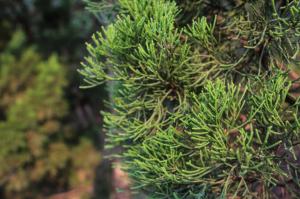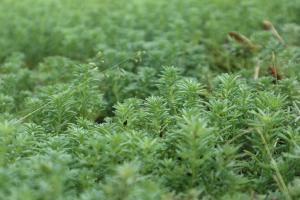Introduction
Tomato plants are popular among gardeners because they are relatively easy to grow and produce delicious fruit. However, sometimes tomato plants can develop yellow leaves, which can be a sign of a problem with the plant. In this article, we will explore the common reasons why tomato plant leaves turn yellow and what you can do to prevent and solve this issue.
Nutrient Deficiencies
One of the most common reasons why tomato plant leaves turn yellow is nutrient deficiencies. Lack of essential nutrients like nitrogen, phosphorus, or magnesium can cause yellowing of the leaves. Nitrogen is especially important for plant growth and is necessary for the production of chlorophyll, which gives leaves a green color. When a plant lacks nitrogen, the older leaves become pale green or yellow first, and then the yellowing spreads to other leaves.
Watering Issues
Another reason why tomato plant leaves turn yellow is watering issues. Overwatering or underwatering can both cause yellowing of the leaves. When plants are overwatered, the roots become waterlogged, and the plant cannot absorb the necessary oxygen for growth. As a result, the leaves turn yellow before dying off. On the other hand, underwatering can also make the leaves yellow because the plant does not get enough water to produce food through photosynthesis.
Diseases and Pests
Tomato plants can also develop yellow leaves because of diseases and pests. Common tomato diseases like bacterial wilt, fusarium wilt, and verticillium wilt can all cause yellowing of the leaves. These diseases are caused by soil-borne pathogens that attack the tomato plant's roots and vascular system. In addition, pests like aphids, spider mites, and whiteflies can suck the sap from the leaves, causing them to turn yellow and die off.
Environmental Factors
Environmental factors can also play a role in yellowing of tomato plant leaves. Extreme temperatures, whether high or low, can cause stress to the plant, leading to yellowing of leaves. When temperatures are too high, the plant's metabolism speeds up, and the leaves can't produce enough energy, causing them to turn yellow. Similarly, when temperatures are too low, the plant's metabolic processes slow down, and the leaves can't absorb enough nutrients or water, causing them to yellow.
Prevention and Treatment
To prevent yellowing of tomato plant leaves, you should provide your plant with appropriate nutrients and water. Regularly fertilize your plants with a balanced fertilizer containing nitrogen, phosphorus, and potassium. Make sure your plants get enough water, but avoid overwatering. To prevent diseases and pests, use appropriate control methods like crop rotation, pruning, and applying insecticides when necessary. Finally, protect your plants from extreme temperatures by providing shade or shelter.
If your tomato plant's leaves have already turned yellow, you can try to diagnose and treat the problem. If nutrient deficiencies are the cause, fertilize your plant with a fertilizer that contains the necessary nutrients. If disease or pest infestation is the cause, remove the infected or infested parts of the plant and apply appropriate treatments. If environmental factors are the cause, try to protect your plant from extreme temperatures by providing shade or shelter.
Conclusion
Yellowing of tomato plant leaves can be alarming, but with proper care and attention, you can prevent and treat this issue. By providing your plant with appropriate nutrients, water, and pest control, you can keep your tomato plants healthy and productive. Remember to diagnose the underlying cause of yellowing and take appropriate measures to address the issue. With these tips, you can enjoy a bountiful harvest of delicious, healthy tomatoes.

 how many times do yo...
how many times do yo... how many planted tre...
how many planted tre... how many pine trees ...
how many pine trees ... how many pecan trees...
how many pecan trees... how many plants comp...
how many plants comp... how many plants can ...
how many plants can ... how many plants and ...
how many plants and ... how many pepper plan...
how many pepper plan...































